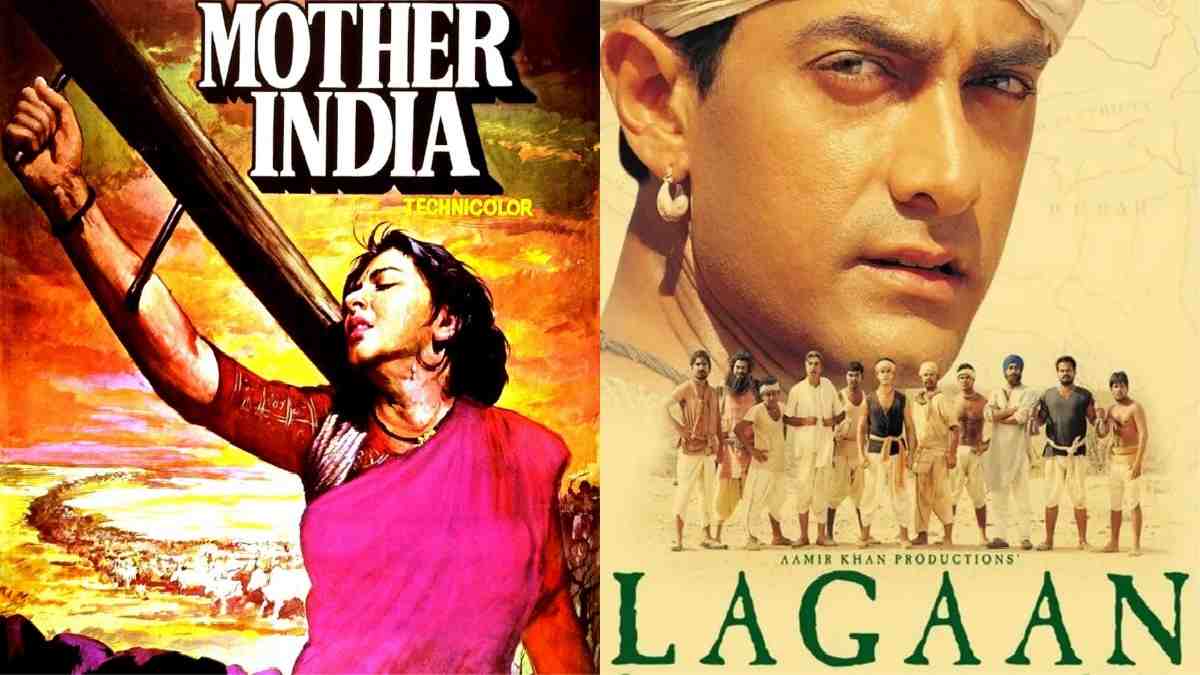Indian movies nominated for Oscars over the years The Academy Awards are a significant event for movie fans, and Hollywood has capitalised on this fact since its inception.
The Oscars are fundamentally a westernised event that doesn’t really cater to other regions of the world and somewhere that has left a significant hole as a byproduct of Hollywood’s amazing movie creation.
The South Asian film industry is by far one of the underrepresented groups, and the Indian diaspora has been disappointed by the low number of Indian films that have received Oscar nominations. However, we can only hold out hope that things will improve in the near future.
Here is a list of the films that did, however, make the cut.
Read on.
List of Indian movies nominated for Oscars
1.Mother India
Mehroob Khan’s Mother India, a renowned movie from 1957, introduced the world to the potential of Indian cinematography.
It says a lot that the first Indian film to receive an Oscar nomination was the one starring Nargis, Raaj Kumar, Rajendra Kumar, and Sunil Dutt.
The protagonist of the tale is a woman named Radha, who is viewed as the village’s “mother” in essence.
The movie depicted her struggle to raise her two sons and her struggle to survive while dealing with other looming problems and a nefarious moneylender.
It also portrayed Nargis as a role model and the struggle of both India’s women and the nation as a whole.
The title of the film is important since it contradicted American author Katherine Mayo’s
Mother India (1927), a book that misrepresented Indian culture.
The aftermath of its 1947 independence serves as the backdrop of the film and suggests a strong sense of nationalism.
2. Salaam Bombay!
Even though Mira Nair starred in Monsoon Wedding, her directorial debut was what actually launched this outstanding director.
The slums of Mumbai have long been a source of inspiration for artists, from the hip Gully Boy to the commercial Slumdog Millionaire, but Salaam Bombay! is the original.
It was one of the best Indian films to be nominated for an Oscar, and it was inspired by the experiences of Mumbai’s slum kids.
Shafiq Syed, Raghuvir Yadav, Anita Kanwar, Nana Patekar, Hansa Vithal, and Chanda Sharma were the film’s leading actors. It was a revelation for the world’s audience.
Krishna, a small child, is the main character of the story and is tasked with collecting money to compensate for the damage to his older brother’s motorcycle.
He failed,
eventually gets him to board the train for Bombay.
He is quickly robbed, but he ends up becoming friends with the criminals who take him to the famed Falkland Road red light district, the seedy part of the city.
3. Lagaan
The film, which was directed by Ashutosh Gowariker and is produced by Aamir Khan, stars Paul Blackthorne, Rachel Shelley, Aamir Khan, debutante Gracy Singh, and Khan.
The plot, which is set in the fictional community of Champaner, centres on the people who wait outside Cantonment grounds to meet the king—who, incidentally, is playing cricket—in the hopes that they will be exempt from paying the tax because of the drought.
However, things do not look good for them when Bhuvan, a young farmer who appears to find the game humorous, dares them to a game in exchange for a three-year tax exemption.
The locals begin to work together to defeat the British and avoid the harsh tax levy. The third most grossing Hindi film of 2001, which was also the third Indian film to receive an Oscar nomination, did well at the box office. It was heard
4. Writing with Fire
Writing with Fire, a critically acclaimed documentary directed by Sushmit Ghosh and Rintu Thomas, presents the story of journalists who are in charge of running the Dalit women-led daily Khabar Lahariya.
It discusses the crucial transition from print to digital media via cellphones.
It has taken a 14-year journey to become the first new agency led by oppressed women who bravely accept the challenge of reporting without a shred of fear.
The trio of the boss, chief reporter Meera, and crime reporter Suneeta take on the enormous challenge of reporting from the most unstable areas of the nation while bringing to light urgent matters that many wouldn’t have the audacity to bring up.
5. The House That Ananda Built
The House That Ananda Built, a 1968 short documentary directed by Fali Bilimoria, centres on Ananda Karan, a prosperous Nagpur-based Odiya merchant.
It narrates the tale of this family and provides us with insight into their life, especially that of Ananda, his children, and his views both before and after independence, as well as how those beliefs had impacted his family.
As we watch Ananda reflect, it incites nostalgia in the audience and encourages us to recall earlier ideas, thoughts, and lifestyles.
6. Little Terrorist
It appears that this family is gifted in many ways.
One of the most sentimental Indian films to be nominated for an Oscar was Little Terrorist, a 2004 short film directed by the son of renowned fashion designer Ritu Kumar.
It has Sahaj Sorathiya, Vats Gajera, Sushil Sharma, and Megnaa Mehta in the key parts and, aside from the genocide, has a mild “The Boy in Striped Pajamas” flavour.
The story centres around Jamal, a 10-year-old Muslim boy from Pakistan, and how he crossed the border into India while taking part in a fun game of cricket.
Although for some people this would be a delicate subject, Kumar handles it well.
A shelter is provided for Jamal.
7. The White Tiger
The White Tiger, a film written and directed by Ramin Bahrani, is based on the same-titled book by Aravind Adiga.
The movie, which features Adarsh Gourav, Priyanka Chopra Jonas, and Rajkummar Rao in the key roles, depicts the life of Balram, an impoverished Indian man who utilises his intellect to get out of his situation.
He later starts driving for a wealthy family, but a car accident leaves him disturbed and worried about the security of his family.
He takes matters into his own hands (things get pretty grimy here) and makes an effort to live up to the appellation of “The White Tiger,” a metaphor that has been deftly exploited in the film, in order to reverse the occurrences.
There is unmistakably a class divide throughout the film.

8. An Encounter with Faces
An Encounter with Faces, a film directed by the renowned Vidhu Vinod Chopra, provides us with a detailed look at the life of juvenile offenders from the Mumbai neighbourhoods of Dongri and Mankhurd.
A truly heartbreaking drama, it shines light on the children who describe their predicament, socioeconomic situation, and challenge. It is a great approach to become familiar with the pressing problems facing the nation.
Although it’s not the most enjoyable movie to watch, it makes a good effort to increase viewer knowledge.
The focus on rehabilitation in this film surely draws attention and draws attention to the stark societal disparities
Indian movies nominated for Oscars over the years
Read More:-
SSC CGL – Staff Selection Commission CGL 2022 Registration ends today: Here’s how to apply
How to Rewire Your Brain for Success at the Highest Levels
